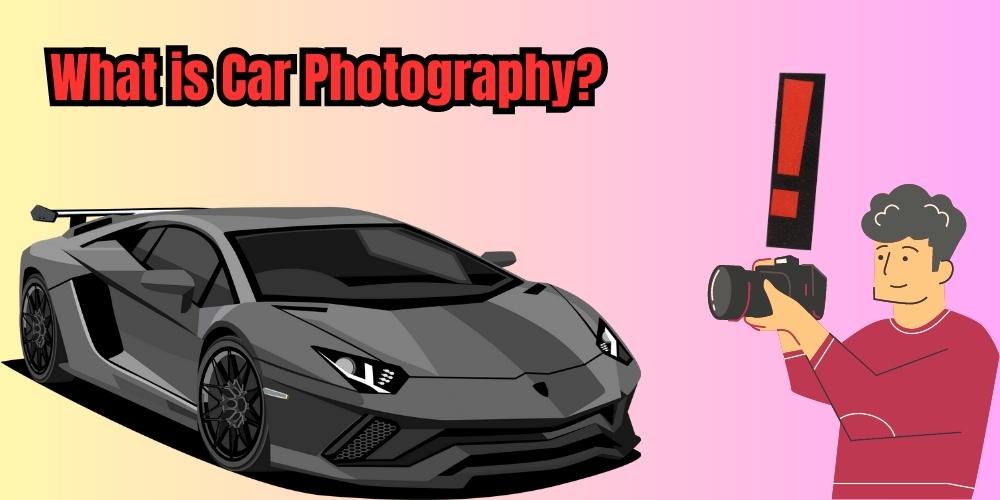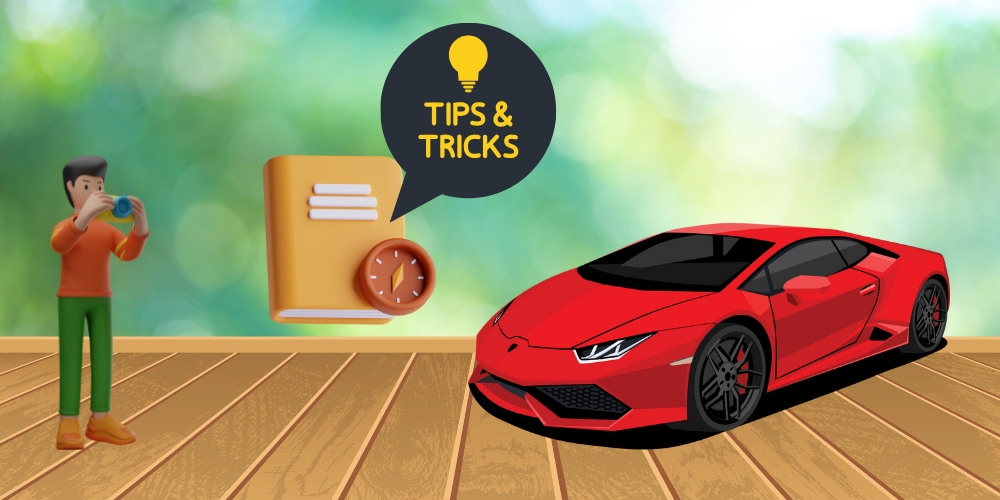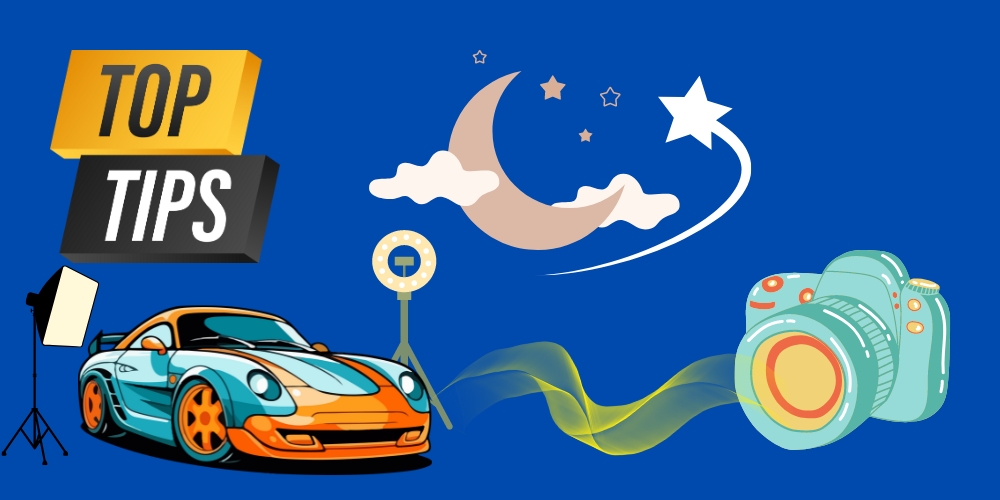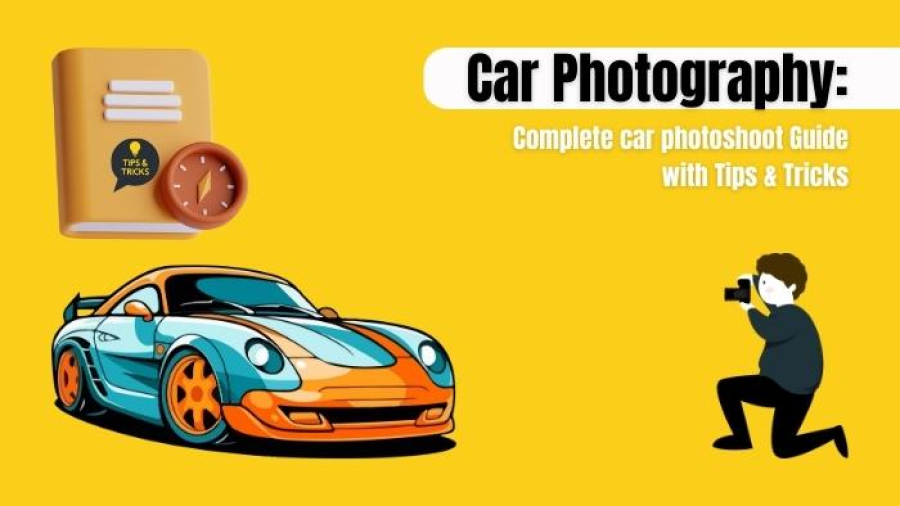What is the best car Photoshoot guide with tips and tricks? Do you need to know the answer? Have a close look at this article below.
Car photography has a lot of meanings. Ever since they were first invented, cars have been a symbol of freedom and adventure. Over time, they’ve become a symbol of status that shapes people’s identities.
But one thing has stayed the same – they make fantastic subjects for photography! Whether you want to show off a car’s sleek and streamlined look for commercial photos or capture the meaning behind a car for an art project, there are many types of car photography.
In this article, I will share the five most potent techniques that guarantee high-quality images, including tips for car photography at night. Whether you are a novice or an experienced professional looking to improve your photography, this article will provide you with the roadmap to achieving success.
So, grab your equipment, strap in, and prepare for a thrilling journey. Let’s learn the most fantastic car Photoshoot guides with tips and tricks below.

What is Car Photography?
Car photography is an art form that demands attention to detail, imagination, and technical proficiency. Whether you want to take pictures of vintage cars, fast-paced racing cars, or just show off the newest model, each car photography has its challenges and possibilities.
The car photography industry is one of the most deceptive art forms in the world. Photographers who specialize in this field focus on capturing the best aspects of every car they work on and help to create beautiful photographs that capture the hearts and minds of the audience.
Complete Car Photoshoot Guide with Tips & Tricks
Automotive photography offers a thrilling experience. However, it also presents several difficulties: cars are highly reflective, move quickly, and can blend in with various urban and rural settings. Below you will find a vehicle Photoshoot guide with tips and tricks. But first of all, let’s learn about the types of car photography.

Types of Photography of Cars:
Car photography is the art of taking pictures of cars. It’s a special kind of photography where you can take photos of vehicles for a variety of reasons, like for marketing, design, or just to document something. There are many different kinds of car photography, each with its purpose.

- Commercial Car Photography
This kind of photography is all about selling cars. You’ll see it all over car magazines and ads. The aim is to make your car look as good as possible so people will want to buy it. This kind of photography usually takes place in a stunning spot with great lighting.
-
Car Photography at an Exposition
This kind of photography is typically conducted at automotive shows or exhibitions. The objective is to capture the various vehicles displayed. This kind of photography typically includes close-up shots of the multiple components of the vehicle to provide the audience with a more detailed view of the vehicle.
- Car Photography at a Race Track
This type of photography focuses on capturing the enthusiasm of a racing event. It is typically associated with professional racing events. However, it can also be used for amateur races or even practice sessions. This type of photography aims to capture the enthusiasm and speed of the race. It is common to see fast-moving cars in this type of photography and may employ a slow shutter speed for capturing the movement.
Car Photoshoot Guide With Tips & Tricks:

-
Take both wide-angle and up-close pictures of cars.
You must be versatile to show off the real you in your photography. Don’t just stick to wide shots and close-ups – take advantage of the power. Wide photos are like a sweeping view, setting the scene and showing off the car’s surroundings. Think of it like the first shot of a movie – it sets the tone and builds up the excitement. Close-ups are all about showing off the details that make each car unique.
Focus on all the smooth lines, chrome details, and beautifully detailed interior – show off all the stitching, detailing, and sparkle. These close-up shots create an emotional connection with the viewer and make them appreciate the work and craftsmanship that goes into every car. Combining wide and close-ups creates a powerful visual narrative that will bring the vehicle to life and leave your audience in awe.
-
Show Off Small Details.
Photographing the entire car is excellent, but the small details often catch your eye. Move your camera around the car, stopping when you see something that catches your eye, such as an old badge, an intake vent, or a rusting bumper. After that, try incorporating light painting into your photography. Light painting is a technique that uses a small light source to paint over a vehicle’s exterior. You’ll need to add a few tricks for light painting.
First, get your camera and lens set up on a tripod. Ensure you have the crucial setup correct, and set the shutter speed to at least 10 seconds so you have enough time to paint your car. Light painting works best when shooting at night and against a bright background, like city lights. Pick a small aperture and the smallest ISO number, and you should be able to adjust the shutter speed to a few seconds. Aim for 10 seconds as a ballpark figure and adapt as you go.
-
Brainstorming is the key.
The human subject isn’t the only thing that can be added to a car shot. Take a snapshot of someone driving a car or opening a door. It’s easy to get a good picture of someone standing tall with a vehicle in the background. You need to pick a theme that matches the car’s personality. If the person in the picture likes what they see, they’re more likely to relate to it. But unfortunately, the marketing world keeps using generalizations. If you’re using a model in the shot, make sure they match the people in the audience.
A shallow depth of field enables you to emphasize the finer details of the vehicle, which is beneficial when attempting to convey a sense of dimension. A wide aperture reduces the depth of field. By limiting the area of focus, you can reduce the visibility of extraneous elements in your composition while emphasizing the focal points. Examples of focal points include logos, grilles, and fenders.
Best Tips for Night Shoots for Cars:
Night car photography is super simple and impressive! The hardest part is finding a dark spot – streetlights and a full moon can ruin the shot. Once you have that sorted out, set your camera on a tripod, ISO to 100, shutter to 30 seconds, and zoom to f/9. Once you’re ready to shoot, grab a good, steady light and walk around the car with it, using a regular flashlight. You can paint the car however you want – there’s no rule here, and you’ll be surprised at the results. Let’s learn the best tips for night shoots for vehicles.

-
Don’t use Flash:
Don’t use flash to take pictures of cars when it’s dark outside. It’ll make people look like they’re glowing and make them stand out from the crowd. Plus, it’ll make your subject look bad. To get better lighting, try turning off all the lights around you, using a light source that’s not too bright but not too dim. Or, capture headlights coming towards you by tilting the camera slightly before you press any buttons. That way, the glare won’t get into your shots and won’t reflect off the glass.
- Turn off all other lights around you.
Use light sources that are not too bright but not too dark, or capture headlights coming towards you by tilting the camera slightly upwards before pressing any buttons so that no glare gets into the picture while reflecting on glass surfaces like windshields or windows. Use side lighting when taking photos of cars to avoid glare from direct sunlight shining on them.
When shooting in daylight, make sure that your subject (the vehicle) is visible against a darker background, such as trees or buildings, so that it can be easily identified.
Check out the video
https://www.youtube.com/watch?v=sYFXFbYm2lk[/embed]
Reference: NIGHT TIME CAR PHOTOGRAPHY – Tips, lighting, and what NOT TO DO!
Channel: The Car Creative
Frequently Asked Questions (FAQ):
Que: What Kind of Camera Is the Best for Car Photography?
Ans: The most powerful type of camera you can use to take high-quality car photos is one with many pixels. The larger the number, the crisper and closer the images will appear on your photo; you won’t have to worry about heavy cropping later on when printing or posting your photos online.
Full-frame sensor cameras are best for capturing the moment your car moves. This type of camera has quick auto-focus and excellent image quality for moving objects – but it comes at a price.
Que: Where is Automotive Photography Used?
Ans: Most automotive photographers work with manufacturers of cars, vans, trucks, and other vehicles to create promotional campaigns for their latest models. Many automotive photographers can also use automobile shoots for dealerships to create a collection of images for their websites and social media pages.
Que: How do you make a car look professional in pictures?
Ans: If you want your car to look professional in photos, pick a clean, simple background that doesn’t detract from the car’s personality. Put the vehicle at an angle that shows off its features and use natural or artificial light to make it look professional. You can also edit the image to add more highlights to make it look better.
Que: What filter is best for car photos?
Ans: There is no one-size-fits-all filter for car photography, as it is contingent upon the desired outcome and aesthetic of the photograph. Nevertheless, contrast and saturation-enhancing filters, such as those found in the “Clarendon” or “Lark” collections, can be a popular choice for car photography.
Conclusion:
In conclusion, mastering the art of car photography requires a blend of technical skill and creative flair. This guide has explored key aspects like lighting, composition, and post-processing. As technology advances, stay adaptable and experiment to develop your unique style. Remember, you aim to craft a visual story that captures the essence and emotion of each vehicle. Armed with these insights, go forth, shoot, and let your passion for cars and photography shine through. Happy shooting!

